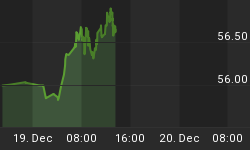Scientists planning to start mining the moon as early as 2025 may soon shift their attention to other celestial bodies as a new study suggests that there are about 1,000 asteroids closer to our planet than the lunar surface and which contain large amounts of the most precious resource: water.
While most of those space rocks are only a few feet in size, at least 25 of them are large enough to be able to serve as a stand-alone water reservoir. Together, the potential of these “hydrated” asteroids is unparalleled as they should be enough to fill nearly 320,000 Olympics-size swimming pools — significantly more than the amount of water locked up at the lunar poles, according to the study.
If there was a way to successfully establish refueling stations on these orbiting asteroids, says asteroid researcher and lead author of the paper, Andrew Rivkin, human space exploration could unlock a “level-up” moment. There would be no need to send fuel from Earth anymore, he says.
“It’s easier to bring fuel from asteroids to geosynchronous orbit than from the surface of the Earth,” Rivkin says. “If such a supply line could be established, it could make asteroid mining very profitable.”
So far there are at least two asteroid mining companies — Planetary Resources and Deep Space Industries — and the US National Aeronautics and Space Administration (NASA) looking into the feasibility of the extraterrestrial endeavor.
In 2015, former US President Barack Obama signed a law that grants US citizens rights to own resources mined in space. The ground-breaking rule was touted as a major boost to space mining because it encourages the commercial exploration and utilization of resources from asteroids obtained by US firms.
Shortly after, Luxembourg launched an official initiative to promote the mining of asteroids for minerals. The tiny European country, which has been studying possible involvement in the sector since 2013, aims to become Europe’s centre for space mining. Related: Safe Haven Assets Shine As Recession Looms
Canada is also eying the moon. Last year, Northern Ontario-based Deltion Innovations partnered with Moon Express, the first American private space exploration firm to have been granted government permission to travel beyond Earth’s orbit, on future opportunities in outer space.
Some of the space ventures in the works include plans to mine asteroids, track space debris, build the first human settlement in Mars, and billionaire Elon Musk’s own plan for an unmanned mission to the red planet.
Geologists as well as emerging companies, such as US-based Planetary Resources, a firm pioneering the space mining industry, believe asteroids are packed with iron ore, nickel and precious metals at much higher concentrations than those found on Earth, making up a market valued in the trillions of dollars.
By Mining.com
More Top Reads From Safehaven.com:
















